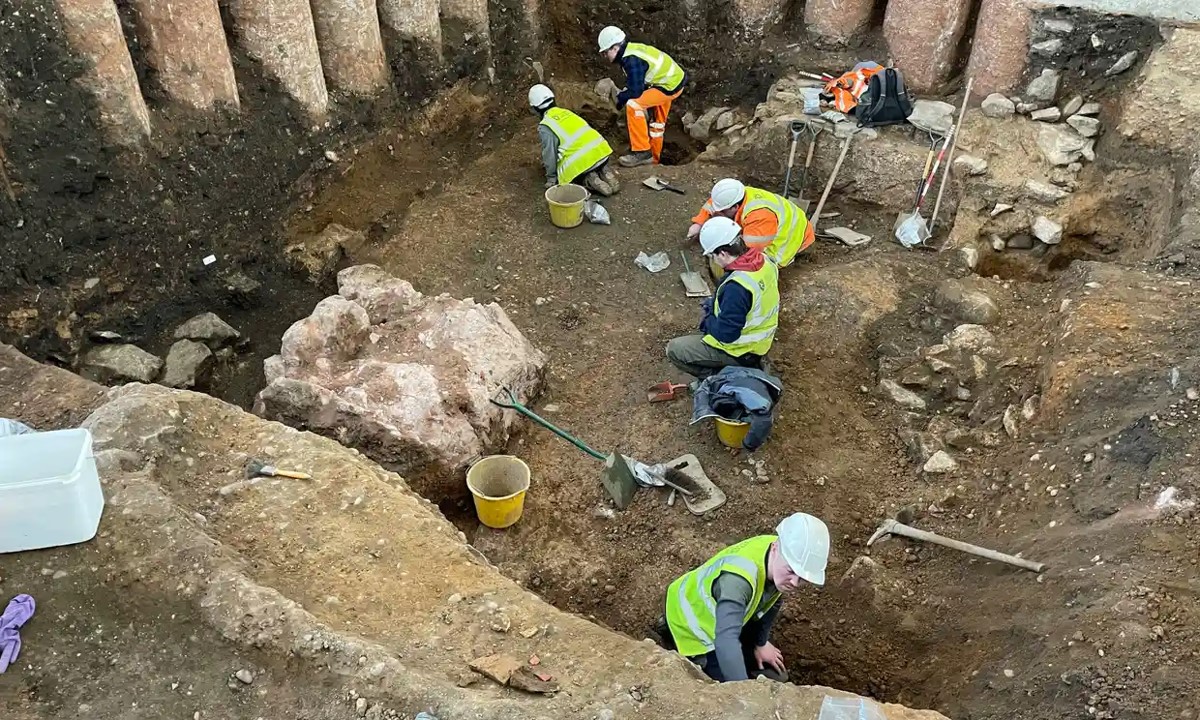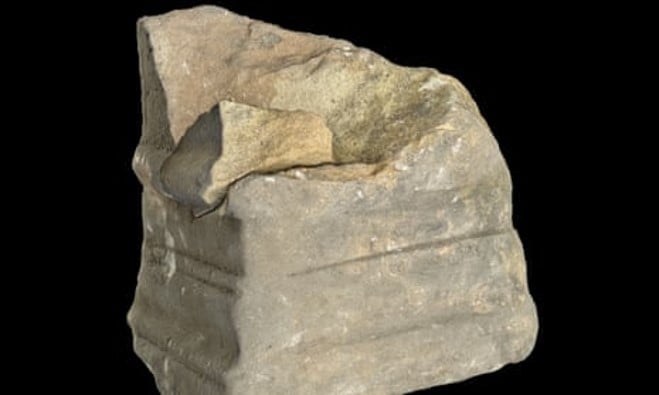
An ancient Roman shrine, possibly of the Greek god Dionysus, was discovered recently buried beneath the graveyard of Leicester Cathedral in the United Kingdom.
The find, along with thousands of others, was identified by archaeologists during preparatory excavations for the construction of a visitor and learning center at the cathedral.
The discoveries around the cathedral grounds seem to confirm that it was customary for places of Christian worship to be built over much older ancient Roman ruins.
The discovery
Archaeological excavations around Leicester Cathedral have been underway since 2021. The cathedral itself has been closed since 2022 to allow for a £12.7 building project.
During the excavations in Leicester, archaeologists discovered what they now believe is a Roman shrine to either Dionysus, Isis, or Mithra. However, it is difficult to determine with any certainty what deity was worshipped, as only a broken altar base remains in what was once the basement of a large Roman building near the external wall of the modern cathedral.
“There’s always been a tradition that the cathedral was built on a Roman temple, based on antiquarian discoveries in the 19th Century,” said Mathew Morris, the excavation director for the University of Leicester’s Archaeological Services (ULAS), who are responsible for the excavations.
“We’re now finding a Roman building that looks like it had a shrine status to it,” Morris continued.
“There are no tests that can prove what it was. That it was a shrine is the most likely theory, but there aren’t really any others,” he added.
According to ULAS, the building in which the altar was found was probably built in the second century AD and then deliberately filled in during either the third or fourth century.
The ULAS also said the altar “is carved from local Dane Hills sandstone, quarried 1 mile west of the site near Western Park, and measures 25cm by 15cm. There are decorative moldings on three sides and the back is plain, showing that it would have been placed against a wall.”

Who is Dionysus?
Dionysus was a deity in the ancient Greek pantheon, known to the Romans as Bacchus. Like Demeter, Dionysus was a fertility god, but he was specifically associated with the harvesting of grapes and wine-making, and with fruit and vegetation.
This somewhat mysterious god was also associated with insanity, drunken revelry, and religious ecstasy. In many myths, he is accompanied by a retinue of satyrs, male nature spirits with the tails, ears, and sometimes legs of a horse.
Dionysus was also followed by the Maenads. The “raving ones” as they were known, were the most important members of the god’s retinue, and were all women. They were usually depicted in a state of ecstatic frenzy, brought on through a combination of dancing and intoxication.
Worship of Dionysus, or Bacchus as he was also called, was most likely introduced to the Romans by the Greeks who had settled in Magna Graecia (Southern Italy).
The first cult of Dionysus in Rome was probably established around 200 BC in the grove of Stimula near the Aventine Hill. A priestess from Campania established it there, near the temple where Liber Pater (“the Free Father”) had a State-sanctioned, popular cult.
Like Dionysus, Liber Pater was a god associated with wine and male fertility. The early adoption of a cult of Dionysus in Rome may have had a syncretic relationship with this Roman deity.
See all the latest news from Greece and the world at Greekreporter.com. Contact our newsroom to report an update or send your story, photos and videos. Follow GR on Google News and subscribe here to our daily email!



